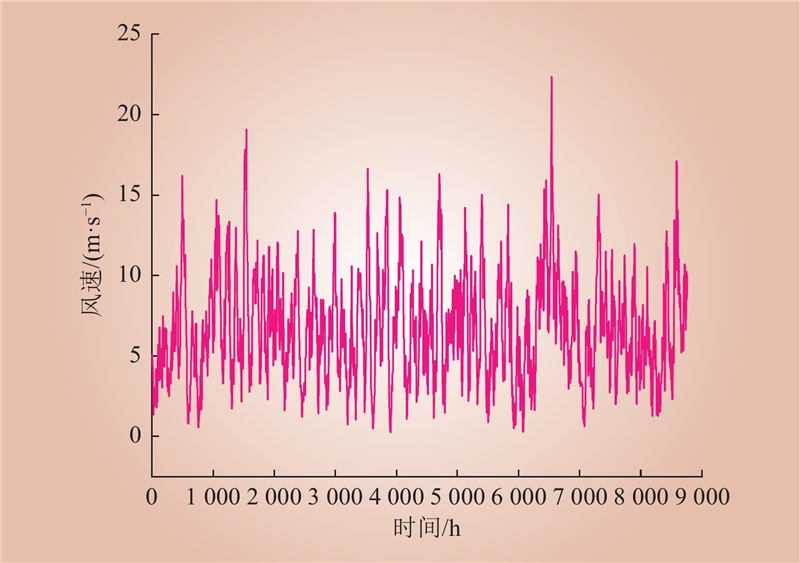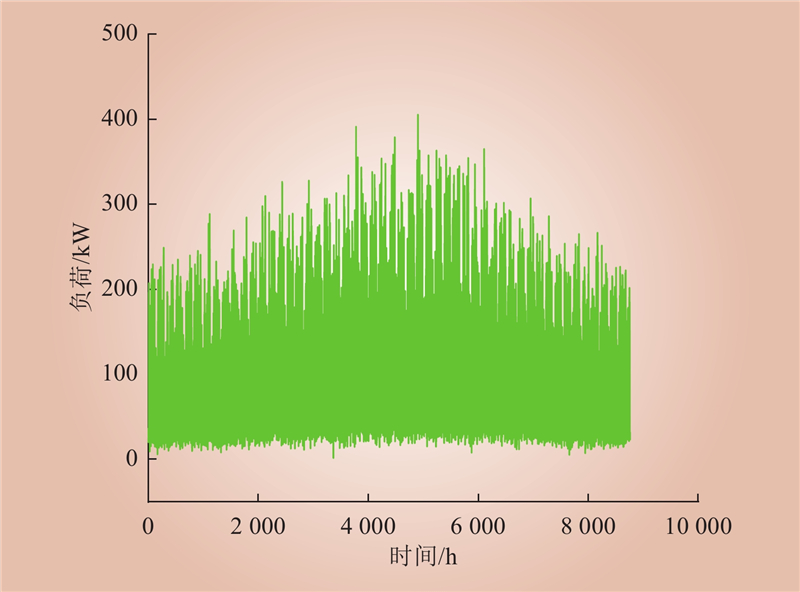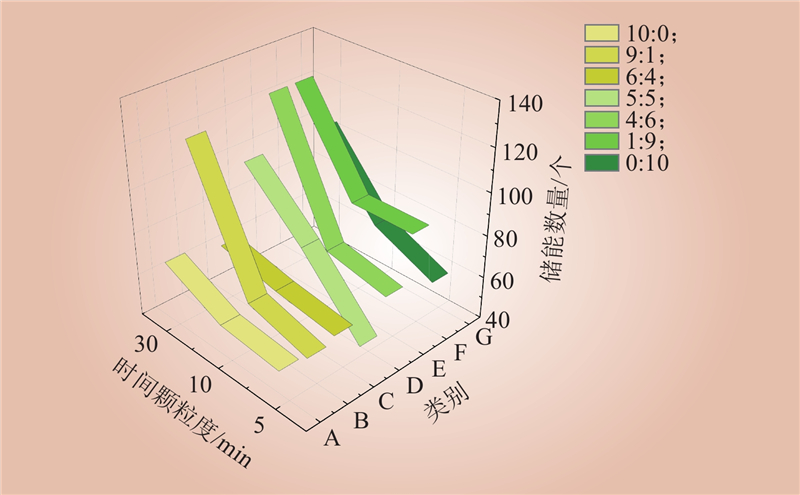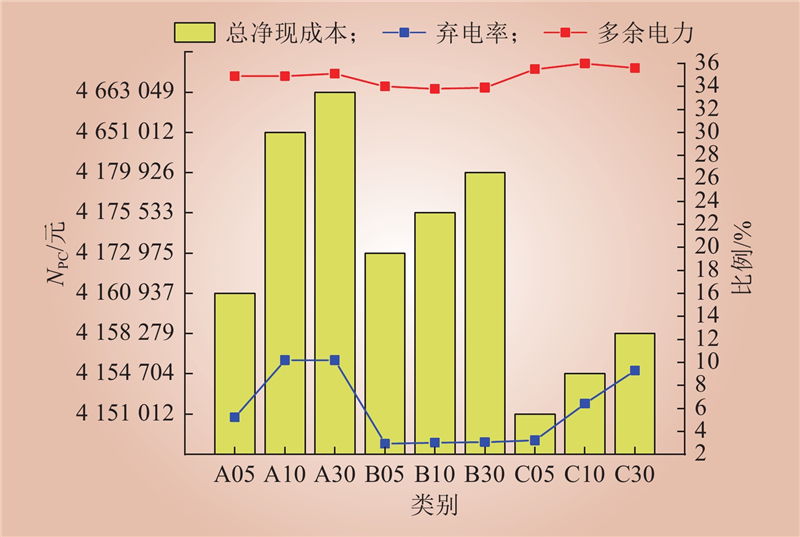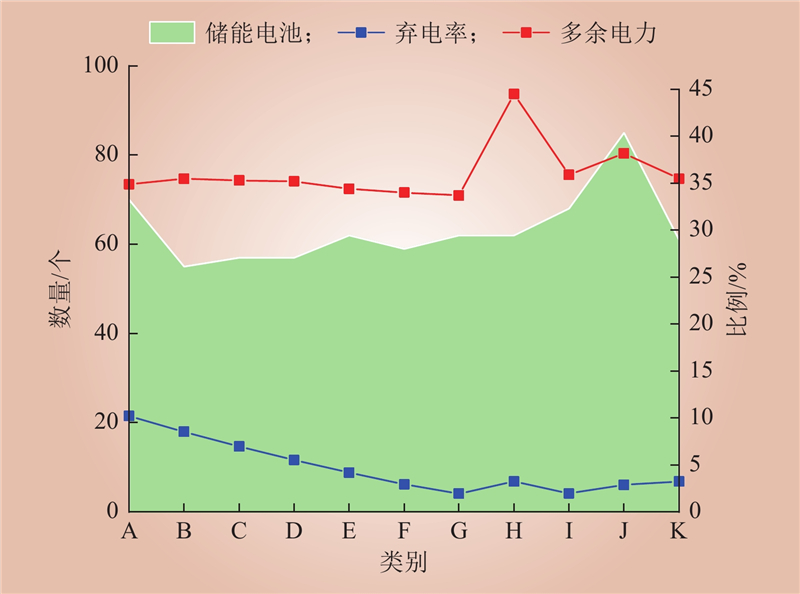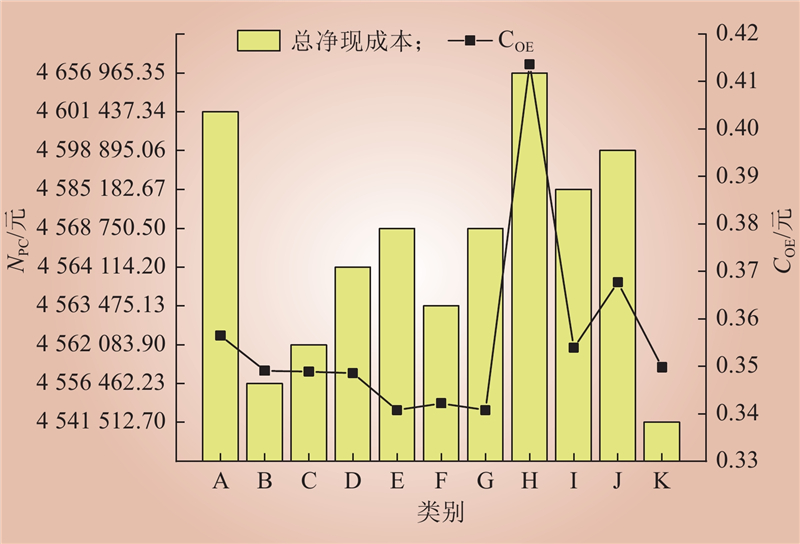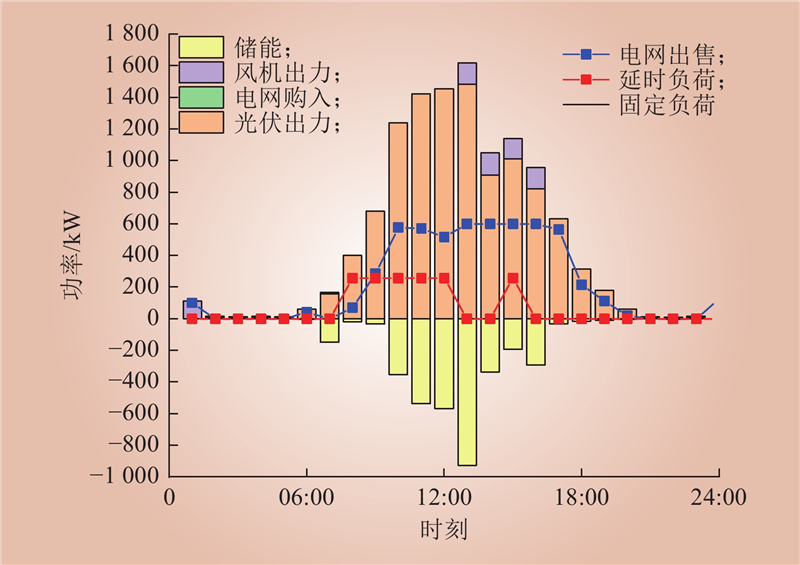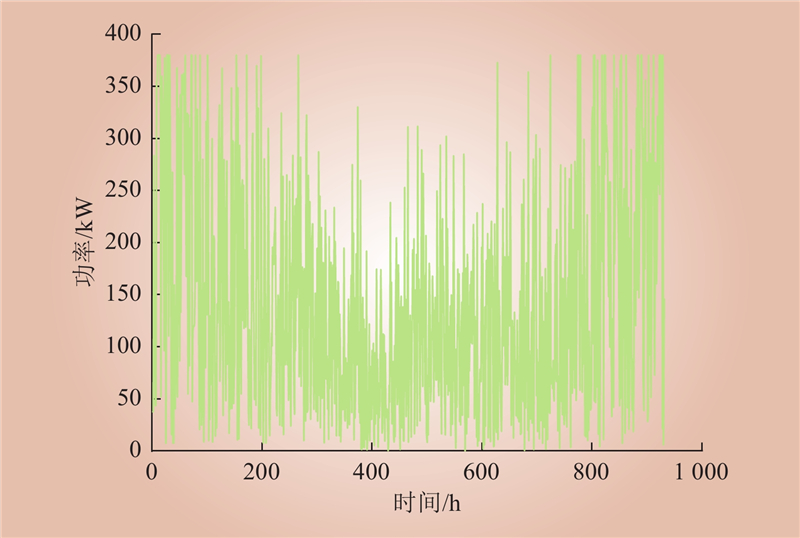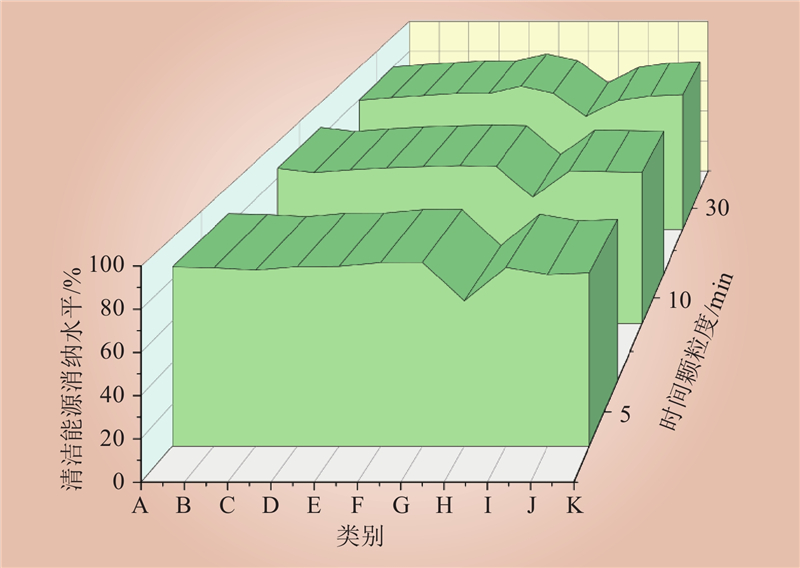| 1 |
任大伟, 侯金鸣, 肖晋宇, 等. 支撑双碳目标的新型储能发展潜力及路径研究[J]. 中国电力, 2023, 56 (8): 17- 25.
|
|
REN Dawei, HOU Jinming, XIAO Jinyu et al. Research on the development potential and path of new energy storage supporting the dual-carbon goal[J]. Electric Power, 2023, 56 (8): 17- 25.
|
| 2 |
闫来清, 曹丽源, 薛太林, 等. 风电场黑启动储能容量优化配置: 一种考虑储能运行策略的方法[J]. 电力系统保护与控制, 2012, 50 (16): 131- 139.
|
|
YAN Laiqing, CAO Liyuan, XUE Tailin et al. Energy storage capacity optimization for wind farm black start-up: a method considering energy storage operation strategy[J]. Power System Protection and Control, 2012, 50 (16): 131- 139.
|
| 3 |
马紫琬, 高仕红, 汤洋, 等. 经济性约束下离网型风光储互补系统电压研究[J]. 湖北民族大学学报, 2019, 39 (3): 315- 320, 331.
|
|
MA Ziwan, GAO Shihong, TANG Yang, et al. Research on voltage of off-grid wind-wind-storage complementary system under economic constraints[J]. Journal of Hubei University for Nationalities, 2019, 39 (3): 315- 320, 331.
|
| 4 |
刘曌煜, 王蕾, 王坤. 基于多目标优化算法的综合能源循环运行控制策略研究[J]. 电子设计工程, 2023, 31 (2): 98- 102.
|
|
LIU Zhao Yu, WANG Lei, WANG Kun. Based on ulti-objective optimization algorithm integrated energy cycle operation control strategy study[J]. Journal of electronic design engineering, 2023, 31 (2): 98- 102.
|
| 5 |
余蕾, 岳超, 车怡然, 等. 电价激励下电力负荷响应潜力评估研究——基于净负荷的广义负荷资源互动分析[J]. 价格理论与实践, 2022, (8): 154- 159.
|
|
YU Lei, YUE Chao, CHE Yiran, et al. Evaluation of power load response potential under electric price excitation: Generalized load-resource interaction analysis based on net load[J]. Price Theory and Practice, 2022, (8): 154- 159.
|
| 6 |
陈海东, 蒙飞, 王庆, 等. 储能系统和新能源发电装机容量对电力系统性能的影响[J]. 储能科学与技术, 2023, 12 (2): 477- 485.
|
|
CHEN Haidong, MENG Fei, WANG Qing, et al. Influence of installed capacity of energy storage system and renewable energy power generation on power system performance[J]. Energy Storage Science and Technology, 2023, 12 (2): 477- 485.
|
| 7 |
赵扉, 薛龙江, 朱晶亮, 等. 基于改进粒子群算法的电力系统储能容量配置方法[J]. 浙江电力, 2022, 41 (11): 17- 22.
|
|
ZHAO Fei, XUE Longjiang, ZHU Jingliang, et al. An Energy storage capacity allocation method for power system based on improved particle swarm optimization[J]. Zhejiang Electric Power, 2022, 41 (11): 17- 22.
|
| 8 |
闫群民, 刘语忱, 董新洲, 等. 基于CEEMDAN-HT的平抑光伏出力混合储能容量优化配置[J]. 电力系统保护与控制, 2022, 50 (21): 43- 53.
|
|
YAN Qunmin, LIU Yuchen, DONG Xinzhou, et al. Hybrid energy storage capacity optimization configuration for smoothing PV output based on CEEMDAN-HT[J]. Power System Protection and Control, 2022, 50 (21): 43- 53.
|
| 9 |
陈崇德, 郭强, 宋子秋, 等. 计及碳收益的风电场混合储能容量优化配置[J]. 中国电力, 2022, 55 (12): 22- 33.
|
|
CHEN Chongde, Guo Qiang, SONG Ziqiu et al. Optimal allocation of wind farm hybrid energy storage capacity with carbon benefit[J]. Electric Power, 2022, 55 (12): 22- 33.
|
| 10 |
徐衍会, 徐宜佳. 平抑风电波动的混合储能容量配置及控制策略[J]. 中国电力, 2022, 55 (6): 186- 193.
|
|
XU Yanhui, XU Yijia. Capacity configuration and control strategy of hybrid energy storage to smooth wind power fluctuations[J]. Electric Power, 2022, 55 (6): 186- 193.
|
| 11 |
向月, 刘俊勇, 魏震波, 等. 可再生能源接入下新型可中断负荷发展研究[J]. 电力系统保护与控制, 2012, 40 (5): 148- 155.
DOI
|
|
XIANG Yue, LIU Junyong, WEI Zhenbo, et al. Research on development of new interruptible load with renewable energy access[J]. Power System Protection and Control, 2012, 40 (5): 148- 155.
DOI
|
| 12 |
蔡含虎, 向月, 杨昕然. 计及需求响应的综合能源系统容量经济配置及效益分析[J]. 电力自动化设备, 2019, 39 (8): 186- 194.
|
|
CAI Hanhu, XIANG Yue, YANG Xinran. Economic capacity allocation and benefit analysis of integrated energy system considering demand response[J]. Electric Power Automation Equipment, 2019, 39 (8): 186- 194.
|
| 13 |
霍伟. 考虑电热柔性负荷的园区综合能源系统容量优化配置[D]. 秦皇岛: 燕山大学, 2022.
|
|
HUO Wei. Capacity optimization of community integrated energy system considering electric-thermal flexible load[D]. Qinhuangdao: Yanshan University, 2022.
|
| 14 |
黄麒元, 刘娇娇, 王致杰. Kinetic电池模型在微电网调度的应用研究[J]. 电力系统保护与控制, 2016, 44 (4): 97- 102.
DOI
|
|
HUANG Qiyuan, LIU Jiaojiao, WANG Zhijie. Application research for Kinetic battery model in micro-grid system scheduling[J]. Power System Protection and Control, 2016, 44 (4): 97- 102.
DOI
|
| 15 |
崔杨, 安宁, 付小标, 等. 面向高比例新能源电力系统调峰需求的储能容量配置方法综述[J]. 东北电力大学学报, 2023, 43 (1): 1- 8.
|
|
CUI Yang, AN Ning, FU Xiaobiao, et al. Overview of energy storage capacity allocation methods for high-proportion new energy power system peak shaving demand[J]. Journal of Northeast Electric Power University, 2023, 43 (1): 1- 8.
|
| 16 |
马汝祥, 周洪益, 邵林, 等. 计及可中断负荷的交直流混合微电网运行优化研究[J]. 供用电, 2021, 38 (10): 97- 106.
DOI
|
|
MA Ruxiang, ZHOU Hongyi, SHAO Lin, et al. Study on operation optimization of AC/DC hybrid microgrid with interruptible load[J]. Distribution & Utilization, 2021, 38 (10): 97- 106.
DOI
|
| 17 |
吴亚宁, 罗毅, 雷成, 等. 基于改进型PEM和L指标的含风电场电力系统静态电压稳定评估[J]. 中国电力, 2022, 55 (9): 192- 203.
|
|
WU Yaning, LUO Yi, LEI Cheng, et al. Steady-state voltage stability evaluation of power system containing wind farm based on improved PEM and L index[J]. Electric Power, 2022, 55 (9): 192- 203.
|
| 18 |
王超. 基于储能的间歇式电源入网功率波动平抑控制策略研究[D]. 成都: 电子科技大学, 2016.
|
|
WANG Chao. Research on control strategy of power fluctuation of intermittent power supply based on energy storage[D]. Chengdu: University of Electronic Science and Technology of China, 2016.
|
| 19 |
季宇, 熊雄, 寇凌峰, 等. 基于经济运行模型的储能系统投资效益分析[J]. 电力系统保护与控制, 2020, 48 (4): 143- 150.
|
|
JI Yu, XIONG Xiong, KOU Lingfeng, et al. Analysis of energy storage system investment benefit based on economic operation model[J]. Power System Protection and Control, 2020, 48 (4): 143- 150.
|
| 20 |
于凤娇, 王典, 李润宇. 计及需求侧响应的分布式电源并网优化策略[J]. 东北电力大学学报, 2022, 42 (2): 92- 103.
|
|
YU Fengjiao, WANG Dian, LI Runyu. Optimization strategy for grid connection of distributed generation considering demand side response[J]. Journal of Northeast Electric Power University, 2022, 42 (2): 92- 103.
|
| 21 |
郭松林, 孙博洋, 姚峣, 等. 储能技术及其在新能源并网系统中的典型应用[J]. 工业控制计算机, 2020, 33 (11): 142- 144, 148.
|
|
GUO Songlin, SUN Boyang, YAO Yao, et al. Energy storage technology and its typical application in new energy grid connection system[J]. Industrial Control Computer, 2020, 33 (11): 142- 144, 148.
|
| 22 |
段树勋. 面向分布式风电光伏的储能容量优化配置方法研究[J]. 自动化应用, 2019, 64 (19): 68- 70.
|
|
DUAN Shuxun. Research on optimal allocation of energy storage capacity for distributed wind power photovoltaics[J]. Journal of Automation and Applications, 2019, 64 (19): 68- 70.
|
| 23 |
陈寒阳, 刘洋, 许立雄, 等. 考虑容量削减的居民用户共享储能优化配置[J]. 电力建设, 2023, 44 (9): 43- 57.
|
|
CHEN Hanyang, LIU Yang, XU Lixiong, et al. Optimal configuration of shared energy storage on residential user side considering capacity reduction[J]. Electric Power Construction, 2023, 44 (9): 43- 57.
|
| 24 |
王红星. 风光储系统储能容量优化配置策略研究[J]. 电气时代, 2023, (8): 32- 35.
|
|
WANG Hongxing. Research on optimal allocation strategy of energy storage capacity of wind-wind storage system[J]. Electric Age, 2023, (8): 32- 35.
|
| 25 |
吴雄, 贺明康, 何雯雯, 等. 考虑储能寿命的风-光-火-储打捆外送系统容量优化配置[J]. 电力系统保护与控制, 2023, 51 (15): 66- 75.
DOI
|
|
WU Xiong, HE Mingkang, HE Wenwen, et al. Optimal capacity of a wind-solar-thermo-storage-bundled power transmission system considering battery life[J]. Power System Protection and Control, 2023, 51 (15): 66- 75.
DOI
|


